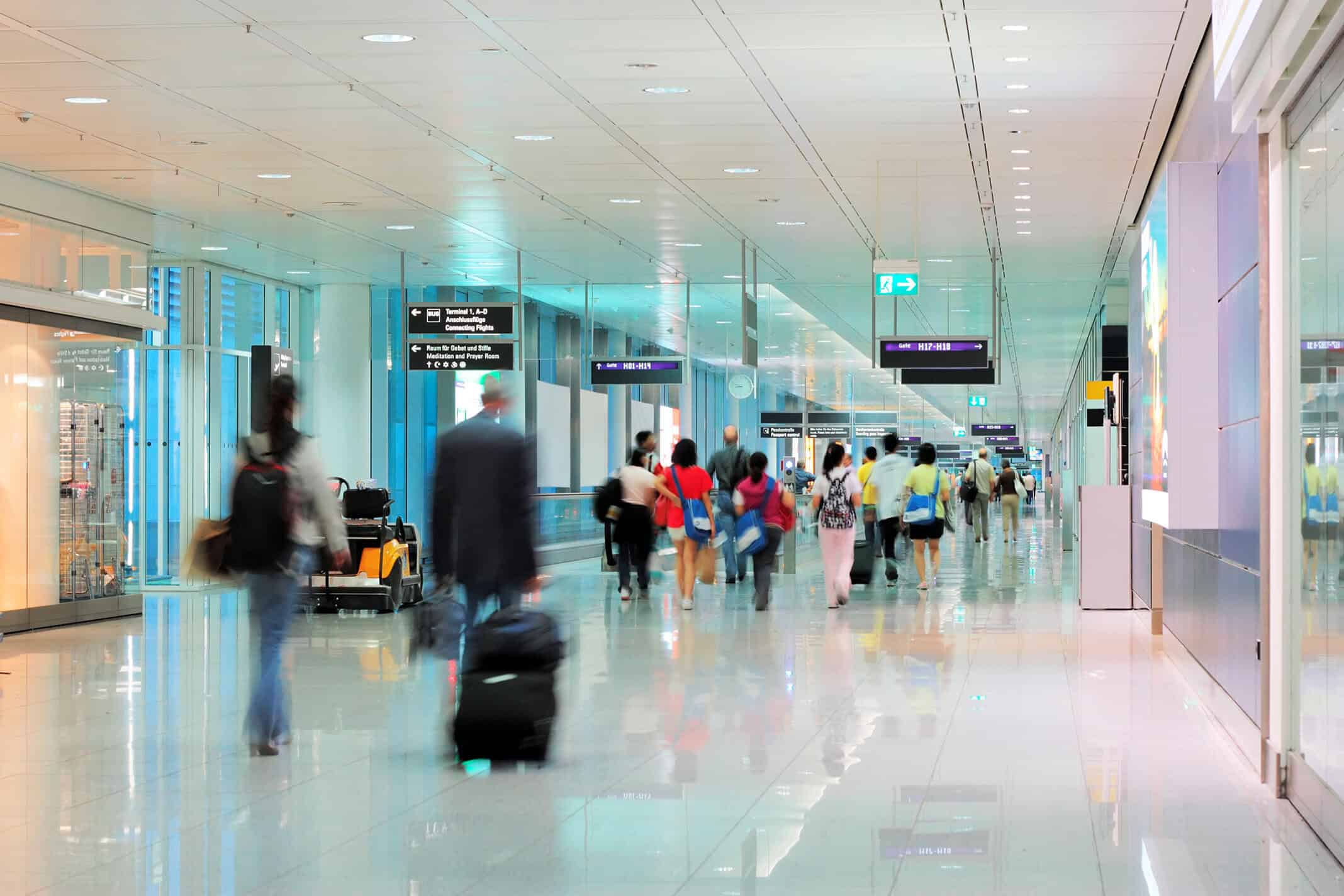
Making Air Travel Friendlier for People Living with Dementia
Research highlights how airports can improve accessibility, comfort, and dignity for travelers with cognitive challenges.

Research highlights how airports can improve accessibility, comfort, and dignity for travelers with cognitive challenges.
For many people living with dementia, air travel is still an important part of staying connected — visiting friends, relocating to be near family, or simply being tourists. But airports, with their crowds, noise, and complex procedures, can be overwhelming.
A study, published in the journal of Disability and Society, reveals that while people living with dementia and their travel companions remain eager to travel, they often experience high levels of anxiety and frustration at airports.
“Our goal was to identify how airports can improve accessibility, comfort, and dignity for travelers with cognitive challenges,” said lead author, and UMTRI assistant research scientist, Dr. Colleen Peterson. Study participants emphasized that being treated with empathy and compassion by staff was key to less stressful airport experiences.
Travelers suggested changes that would benefit not only those with dementia, but anyone with hidden or visible disabilities: designated security lanes, reduced noise, and better staff training.
“Changes such as training airport staff to recognize dementia symptoms and treat all travelers with kindness along with environmental improvements, like improving signage, and physical layouts, can reduce air travel stress ,” said Peterson.
One of the most popular ideas was the use of discreet badges, such as the hidden disability sunflower symbol now used in many airports, to quietly signal that a traveler may need extra assistance. These badges help staff provide help without forcing passengers or companions to explain personal conditions publicly.
Training remains critical, participants noted. Even the best tools only work if airport and security staff understand how to use them. Encouragingly, the U.S. Transportation Security Administration (TSA) has begun adopting best practices based on collaboration with dementia advocacy groups.
Travelers also suggested improvements that are easy to implement but often overlooked such as text-based notifications for flight updates and gate changes. Many people with dementia, as well as older travelers in general, struggle to hear loudspeaker announcements. Personalized messages via apps or text could make travel smoother for everyone.
Environmental changes can make a major difference too. Participants recommended more family restrooms, quiet rooms, and airport layouts that are easier to navigate. Simplified signage, calmer lighting, and inclusive design can reduce confusion and overstimulation, improvements that all travelers would benefit from.
The study, which included 48 persons living with dementia and 176 travel companions, calls for a unified, person-centered approach to air travel accessibility, one that sees cognitive differences as part of the diverse human experience. International examples show that this is possible. Many European airports already integrate disability awareness into training and design. In the United States similar progress is emerging through new advisory committees focused on travelers with disabilities.
Ultimately, creating dementia-friendly airports isn’t just about compliance — it’s about compassion. Changes can transform an anxious experience into an empowering one, helping every traveler take off with dignity and confidence.
This study was published in the journal, Disability and Society, by authors Colleen M. Peterson, University of Michigan Transportation Research Institute, Robyn W. Birkeland, University of Minnesota-Twin Cities; Sara Barsel, Dementia-Friendly Airports Working Group; Tamara L. Statz, licensed marriage and family therapist, Minnesota; Joseph E. Gaugler, University of Minnesota; and Jessica M. Finlay, University of Michigan,